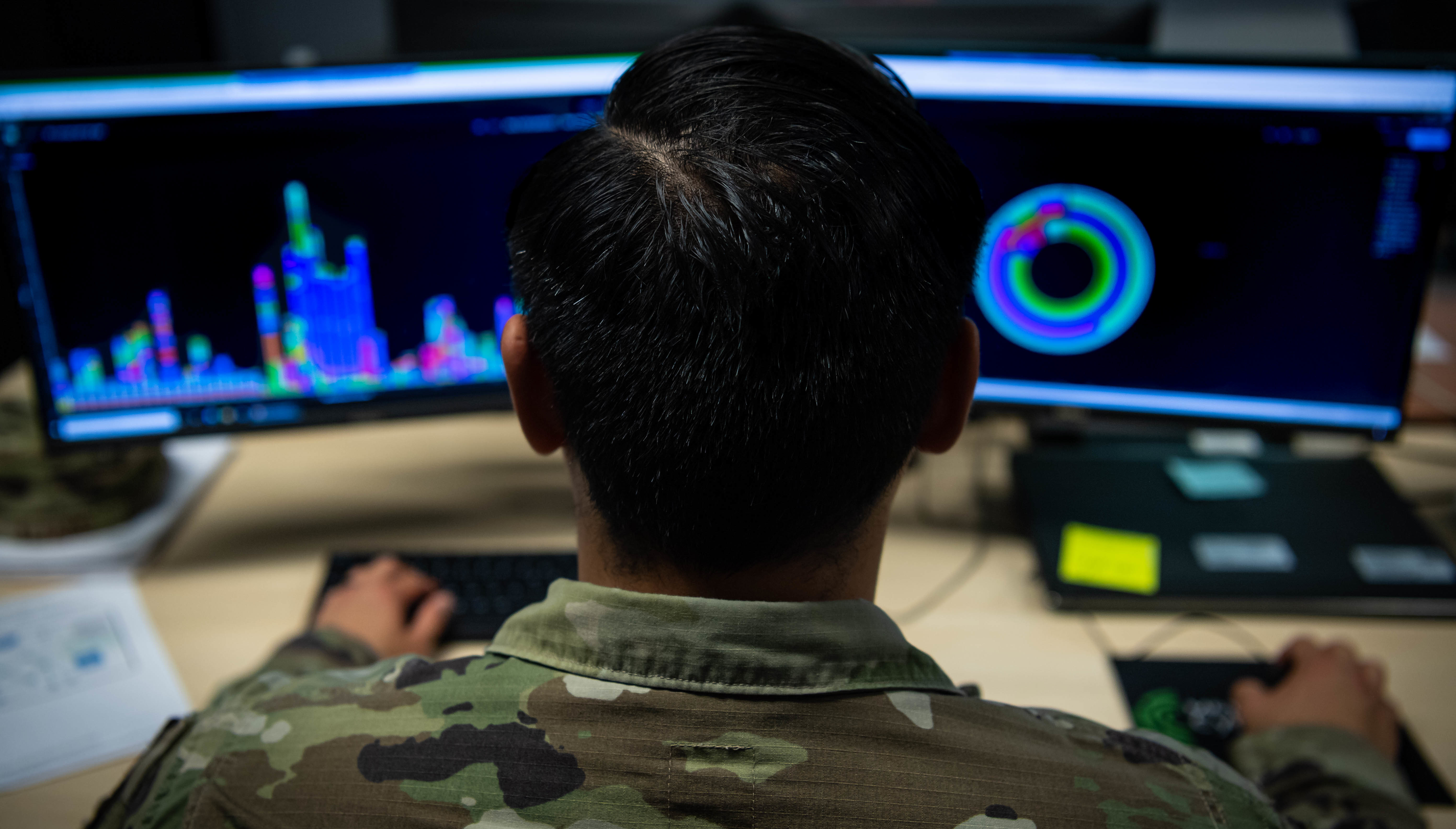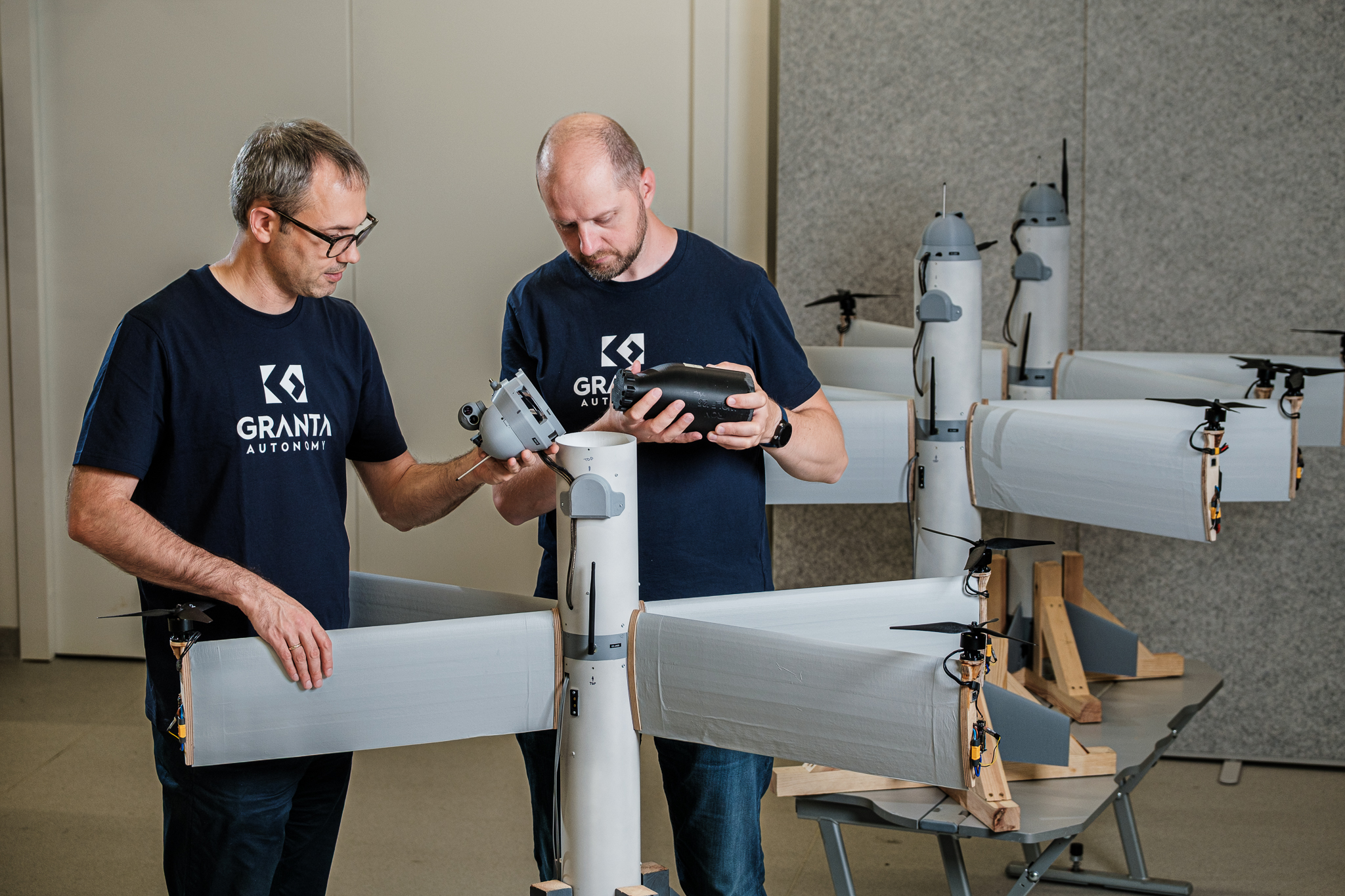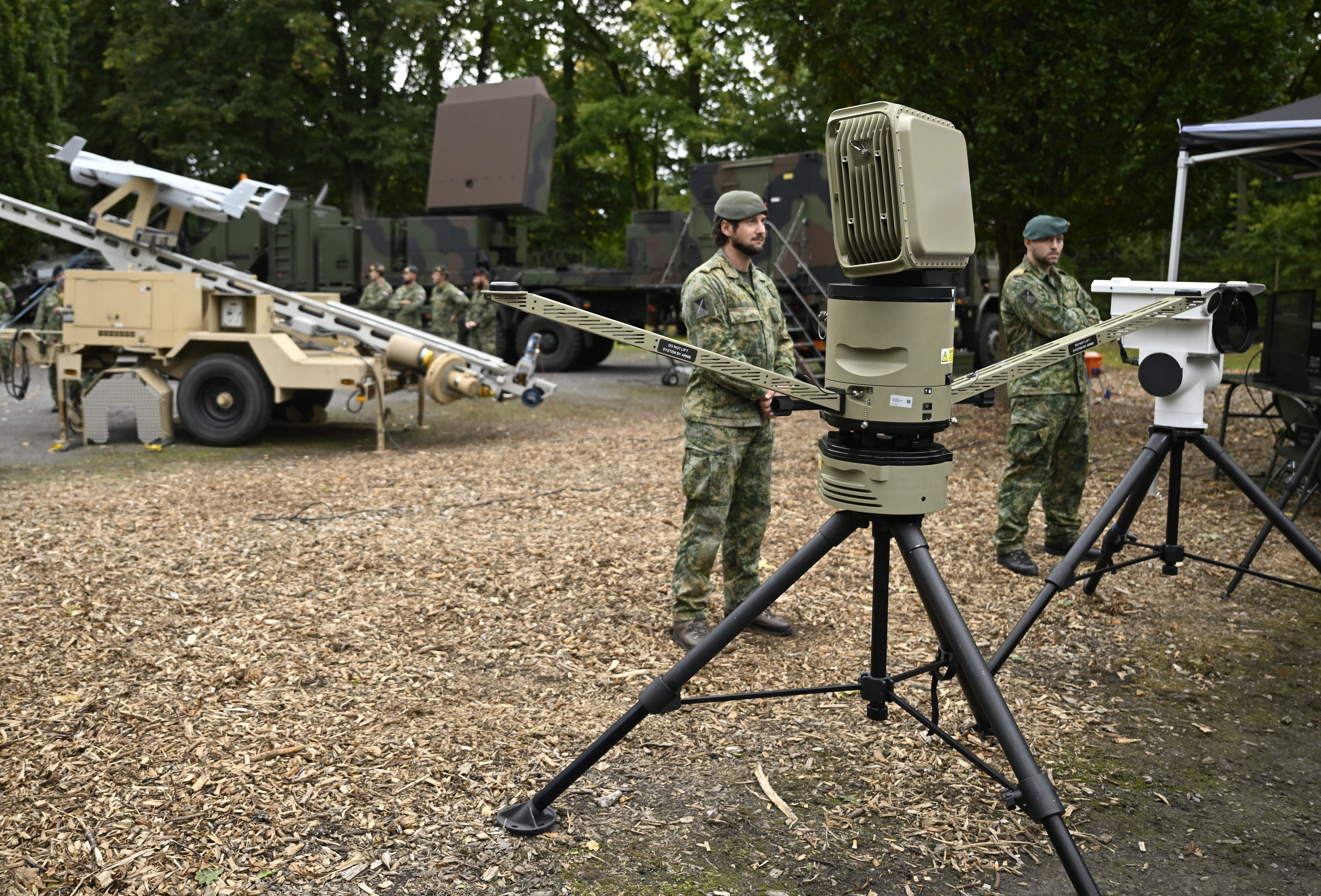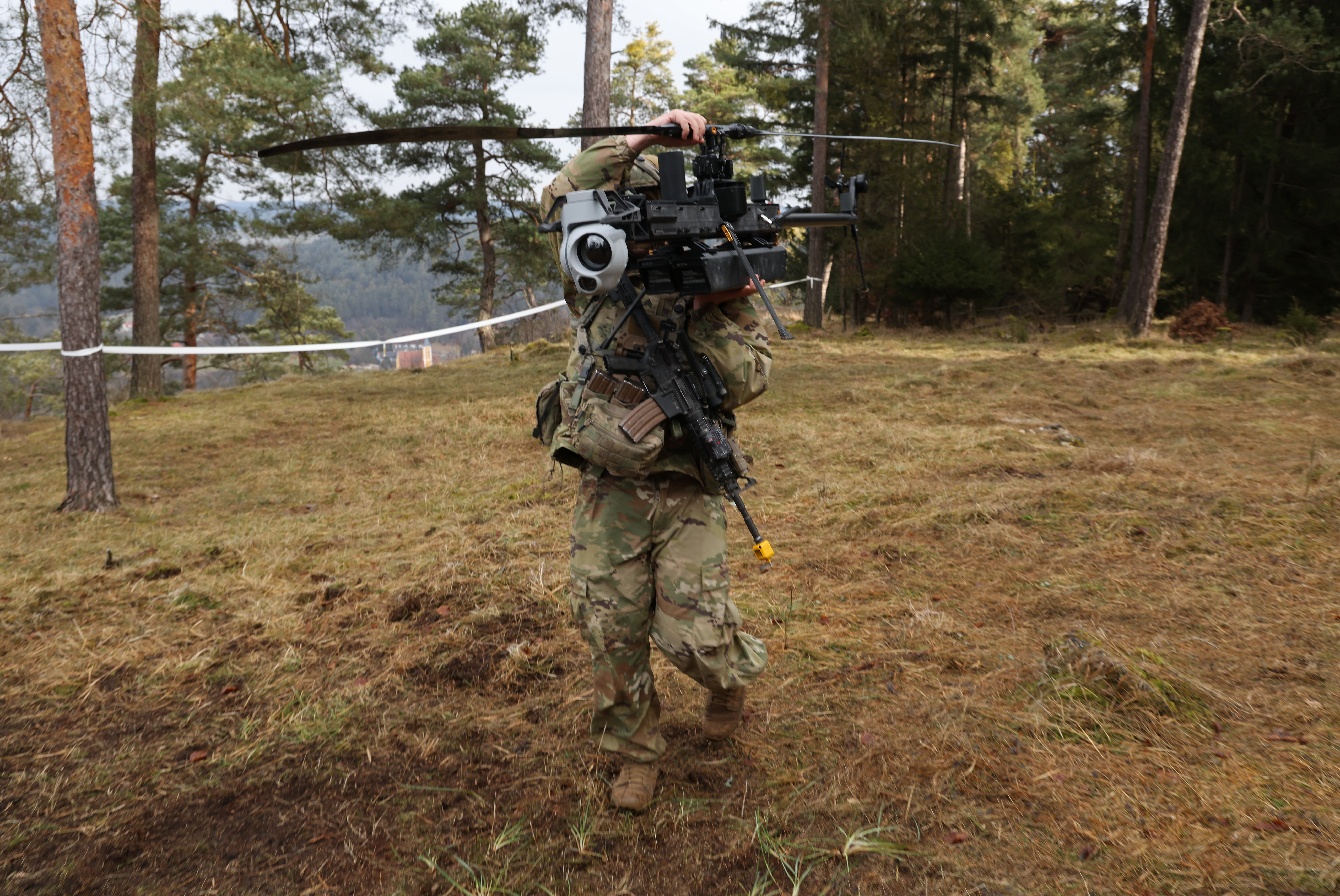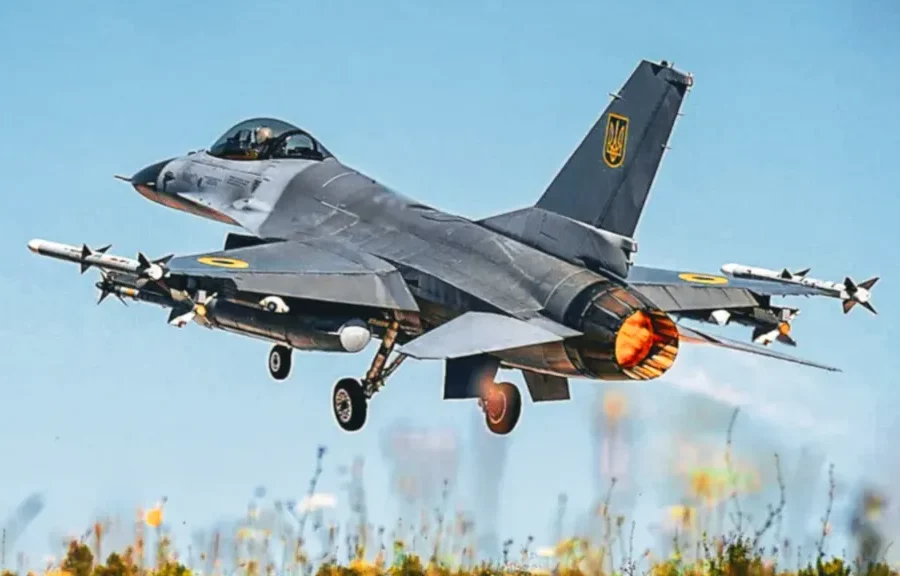
On Oct. 6, the Mitchell Institute for Aerospace Studies was visited by one of Ukraine’s top F-16 fighter pilots, known by his call sign “AB.” As the vice commander of the Ukrainian fighter wing credited with downing over 1,000 Russian Shahed-type drones and cruise missiles, the wing’s combat record is extraordinary. His visit offered a rare and candid glimpse into the ongoing transformation of Ukraine’s Air Force and the pivotal role of the F-16 in defending Ukraine’s skies.
Ukraine’s defense against Russia’s air attacks demonstrates an important and monumental shift in fighting capability executed by Airmen like “AB.” AB earned his wings flying Soviet-built MiG-29s well before Russia seized Crimea in 2014. In the past two years, he and some others have transitioned to Western-supplied F-16s.
During his visit, AB described how his wing and other Ukrainian units achieved hundreds of successful air-to-air engagements, intercepting Russian cruise missiles and Iranian-designed Shahed/Geran drones—systems that, in practical terms, function as long-range, precision-guided cruise missiles. Ukraine’s small fleet of F-16s, flown by a comparably small number of F-16 pilots, now fly roughly 80 percent of all Ukrainian Air Force sorties, demonstrating both the reliability of the Vipers and the remarkable skill of Ukraine’s Airmen.
While Ukraine’s Soviet-era legacy fleet is still valiantly operating, sustainment is now a major worry, given the source of parts and equipment. That makes Western sustainment support for its F-16 fleet all the more essential.
Ukrainian F-16 squadrons fly Block 10 and Block 15 models provided by NATO partners, yet despite conditions that would challenge even the most advanced air forces, they are performing well.
Compared to older legacy Soviet fighter aircraft, the F-16 provides Ukrainian pilots with improved situational awareness, radar performance, and precision strike capability. Missions include defensive counter-air and surface attack.
In the absence of formal training pipelines, established tactics, techniques, and procedures, or U.S. contractor support, Ukrainian pilots ground crews have quickly taught themselves to maintain, arm, and employ the aircraft effectively. They have even developed innovative new tactics, techniques, and procedures to maximize the F-16’s lethality and survivability in one of the most hostile air environments in the world.
Agile Combat Employment
Ukraine’s F-16 force is, in many ways, pioneering a technique the U.S. Air Force calls agile combat employment, executing the concept in real time while under continuous Russian attack. Operating from dispersed airfields, units frequently relocate to keep the Russians guessing, maintaining operations with minimal infrastructure. Ukrainian Airmen have demonstrated the practical value of ACE better than any exercise or simulation could.
Despite constant Russian efforts to destroy their bases and aircraft, Ukraine’s pilots and maintainers continue to sustain sortie rates, adapting under fire. Notably, after nearly four years of Russian air and missile attacks, no Ukrainian air base has been destroyed or put out of action.
The Electronic Warfare Challenge
AB said Russian electronic warfare capabilities are increasingly challenging. Jamming, spoofing, and interference must be overcome daily. He stressed an urgent need for more effective EW systems and countermeasures so his forces can maintain tactical advantage in this increasingly contested electromagnetic spectrum.
Victory in the modern air war depends not only on aircraft performance, but also on the ability to dominate the information and electronic domains.
Gratitude
AB expressed profound gratitude to the American people for their steadfast support of Ukraine int its fight against unprovoked Russian aggression. But the war is far from won, he said, and additional resources—from advanced electronic warfare systems to sustained logistical support—are needed for Ukraine to continue to defend its sovereignty and bring Russia to the negotiating table from a position of strength. Asked what the United States could do to most increase their success, he did not hesitate: “Block 70 F-16s and more missiles. There are a lot of targets to shoot down.”
Lessons for the US and Allies
Ukraine’s F-16 experience is more than a story of resilience; it is a living laboratory for air warfare—understanding that the size, capabilities, doctrines, and strategies involved are unique.
The Ukrainians are refining tactics, sustaining complex fighter operations without external maintenance support, and applying ACE principles under continuous combat conditions. Unfortunately, U.S. policy currently prevents American personnel from assisting or even observing these efforts in Ukraine—a missed opportunity to draw lessons in real time during one of the most dynamic air campaigns in modern history.
As Russia adapts to Ukrainian tactics, so too will China, North Korea, and Iran, all of which are taking note as Russia fights on. Every day that the U.S. hesitates to provide full and unrestricted support to Ukraine’s airpower efforts is another opportunity for these potential adversaries to learn how to counter Western combat capabilities. The sooner the United States fully commits to ensuring Ukraine’s success, the stronger our own national defense posture will be.
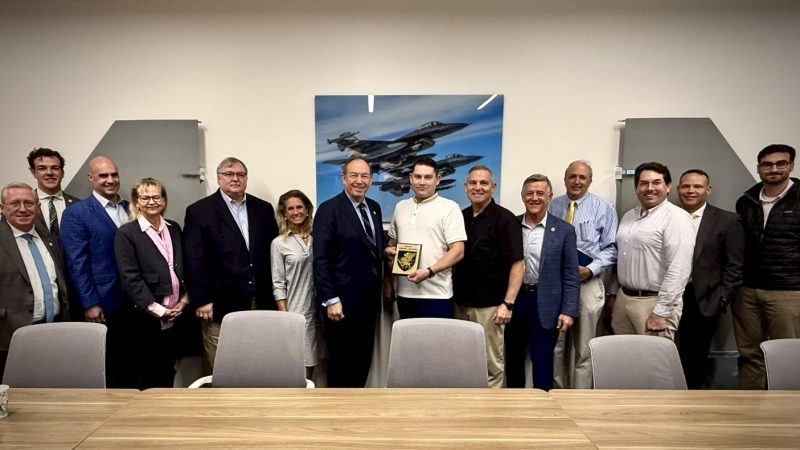
The post Ukraine’s F-16 Force: Innovation, Impact, and Resolve in the Face of Aggression appeared first on Air & Space Forces Magazine.

Air, Russia-Ukraine, F-16s to Ukraine, Ukraine Air Force, Ukrainian Air Force
Air & Space Forces Magazine
[crypto-donation-box type=”tabular” show-coin=”all”]


